What is an E-bike Frame?
An e-bike frame is the core component that all the other parts of the electric bicycle attach to. It provides the overall structure and shape of the e-bike.
The frame influences key factors like:
- Handling and ride quality
- Integration with the motor and battery
- Fit and geometry for the rider
- Mounting points for components like racks and fenders
- Overall weight and portability
Like standard bicycles, e-bike frames come in different styles to suit different riding needs. Common types include diamond, step-through, folding, mountain, road, cruiser, cargo, fat tire, and more.
Materials like aluminum, steel, carbon fiber and titanium each offer a unique blend of properties that factor into the bike’s cost, comfort, performance and durability.
Overview of E-Bike Frame Materials
When shopping for an e-bike, one of the most important decisions you’ll make is which frame material to choose. Each material offers a different combination of qualities like weight, durability, cost, and style.
Depending on how and where you plan to ride, some may suit your needs better than others.

Aluminum Alloy Frames
Aluminum alloys like 6061 and 7005 are lightweight, affordable and corrosion-resistant. Aluminum e-bike frames are a great all-purpose option for most riding conditions.
However, aluminum can dent more easily and the ride may feel stiff compared to other materials.
Benefits:
- Lightweight – An aluminum frame keeps the total weight of the e-bike down, improving efficiency and range.
- Affordable – Aluminum alloy frames are generally the most budget-friendly option.
- Durable – Aluminum holds up well to daily wear and tear.
- All-purpose – Suits most types of e-bike riding: city, trail, cargo, etc.
Drawbacks:
- Harsher ride – Aluminum tends to transmit more road vibration and shocks to the rider.
- Dents more easily – Aluminum alloy can dent from crashes or when transporting/storing the e-bike.
Steel Frames
Steel e-bike frames are durable and often the most budget-friendly. Chromoly steel, in particular, offers an excellent strength-to-weight ratio.
Steel also provides a very comfortable, vibration-absorbing ride. The downside is steel frames tend to be quite heavy and can rust if not properly maintained.
Benefits:
- Durable – Steel withstands heavy daily use and is easy to repair if damaged.
- Comfortable ride – Steel frames flex to absorb shocks and vibration.
- Inexpensive – Basic steel frames are often the most affordable option.
- Strong – Chromoly and high-tensile steels offer an impressive strength-to-weight ratio.
Drawbacks:
- Heavy – Steel weights more than aluminum or carbon, impacting e-bike efficiency and range.
- Rusting – Steel can corrode if left unprotected from the elements. Requires more maintenance.
Carbon Fiber Frames
Carbon fiber is an ultra-lightweight, high-performance material used on many premium e-bikes. Carbon e-bike frames offer an unmatched combination of low weight and road-smoothing vibration dampening.
However, carbon fiber is expensive and can crack under high impact. Carbon also has a distinctive look that may not appeal to all tastes.
Benefits:
- Extremely lightweight – A carbon frame significantly reduces overall e-bike weight.
- Comfortable ride – Carbon absorbs shock and vibration better than any other material.
- Stiff and responsive – Ideal for performance road or mountain e-bikes.
- Visually appealing – Carbon weave has a distinctive, high-tech look.
Drawbacks:
- Expensive – High-end carbon fiber frames can cost thousands more than aluminum or steel.
- Less durable – Carbon can crack from crashes or impact with objects.
- Damage harder to spot – Cracks in carbon fiber may not be visible.
Titanium Frames
Titanium is a lightweight metal that creates a lustrous silver e-bike frame. Titanium combines the best qualities of aluminum and steel, with high strength, low weight, and a plush ride quality.
The major downside is the very high cost of titanium, making it impractical for most buyers.
Benefits:
- Very lightweight – Comparable to aluminum but even lighter.
- Durable – Highly resistant to fatigue and cracking.
- Comfortable ride quality – Titanium flexes to dampen vibrations.
- Corrosion resistant – Requires very little maintenance.
- Visually appealing – Distinctive silver color.
Drawbacks:
- Extremely expensive – Often costs three times more than aluminum or carbon fiber frames.
- Difficult to manufacture – Complex, expensive production process.
- Rare – Very few e-bike brands offer titanium frames.
WHICH IS BETTER: Aluminum vs Carbon Fiber for E-Bikes
When it comes to e-bike frames, two of the most popular materials are aluminum and carbon fiber, So, We’ll be focusing on that today.
Each has its pros and cons, so let’s compare them to determine which is better for your needs.
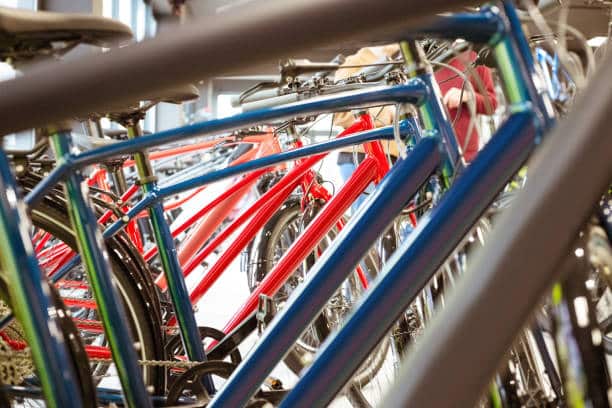
Aluminum alloy
A lightweight, durable metal that’s frequently used for e-bike frames. It’s more affordable than carbon fiber but still provides a smooth ride.
Aluminum e-bikes can handle rugged terrain like mountain biking trails, yet they work equally well for casual riding around town.
The downside is that aluminum frames can transfer more vibration to the rider. They’re also not quite as lightweight as carbon fiber.
Carbon fiber
an ultra-light, high-performance material made of woven carbon strands and epoxy resin. Carbon e-bike frames provide an exceptionally smooth, vibration-dampening ride.
They’re ideal for road bikes and high-performance mountain e-bikes. However, carbon fiber is significantly more expensive and less durable.
It can crack more easily on rough terrain or in a crash. Carbon e-bikes also require more care and maintenance.
Aluminum Frames
- More affordable price
- Durable for off-road riding
- Good all-around option
- Heavier than carbon fiber
- Harsher ride quality
Carbon Fiber Frames
- Extremely lightweight
- Plush, vibration-absorbing
- Best high-performance option
- Much more expensive
- Less durable than aluminum
Overall
- For mountain e-bikes or cargo e-bikes, aluminum is probably your best choice due to its durability and lower cost.
- For casual city riding or road biking, either aluminum or carbon fiber would work well. Carbon fiber does provides a plusher ride but at a higher price.
- For snow or fat tire e-bikes, aluminum is recommended since it’s more impact-resistant.
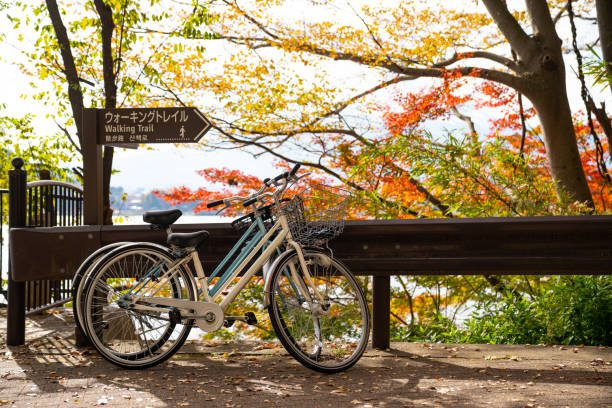
New techniques are allowing e-bike brands to take advantage of both materials. Some are using aluminum for the frame and fork, with carbon fiber for the seat post, handlebars, and rims.
This provides more comfort and a lighter overall weight at a lower cost. Hybrid designs like this may deliver the perfect blend of performance, durability and affordability for your needs.
WHAT IS THE Best Frame for Mountain E-Bikes?
For mountain e-bikes, aluminum and carbon fiber frames are your best options.
- Aluminum frames are affordable, durable and handle the stresses of off-road riding well.
- Carbon fiber frames are lightweight, stiff, and absorb shocks efficiently for a comfortable ride.
Aluminum Alloy Frames
Aluminum alloy frames are a popular, budget-friendly choice for mountain e-bikes. Aluminum is resistant to corrosion and holds up well to the vibrations of off-road riding.
Aluminum frames can last for years and are easy to repair. However, aluminum transmits shocks and can feel harsh on rough trails.
For many riders, an aluminum frame with front suspension provides a good balance of durability and comfort.
Carbon Fiber Frames
Carbon fiber frames are lightweight, stiff and provide an exceptionally smooth ride. Carbon fiber dampens shocks and vibrations for comfort on even the roughest trails.
While more expensive, a carbon fiber frame can shave pounds off your e-bike’s total weight. Carbon fiber frames require more care and can be more difficult to repair. For serious off-road riding, a full-suspension carbon fiber e-bike offers the ultimate performance.
Some e-bike brands now offer frames that blend:
Aluminum and carbon fiber: Hybrid Frames
These hybrid frames aim to provide the best of both materials with the durability of aluminum and the vibration dampening of carbon fiber. The blend of materials can create an e- bike that climbs efficiently yet descends comfortably.
Aluminum or a hybrid frame may suit casual or budget-conscious riders, while carbon fiber benefits high- performance e-bikes for technical trails.
By balancing frame material with your riding style, you’ll be ready to conquer the mountain, whether that’s trail riding or downhill e-biking.
WHAT IS THE BEST FRAME for Electric Cargo Bikes
When it comes to e-bike frames, cargo e-bikes have some special considerations. They need to be extremely durable to handle the extra weight, but also lightweight enough for practical use.
The most common materials for electric cargo bike frames are aluminum alloys and chromoly steel.
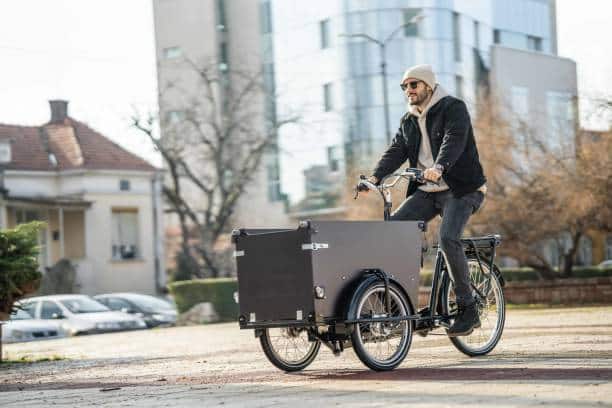
Aluminum Alloys
Aluminum alloys like 6061 are a popular choice for e-cargo bikes. Aluminum is lightweight but can still withstand heavy loads.
It won’t rust and is also relatively affordable. However, aluminum can dent more easily and the ride quality may be harsher. If you plan to haul especially heavy cargo or equipment, aluminum may not be the most durable option.
Chromoly Steel
For the ultimate in durability, chromoly steel is hard to beat. Steel can handle huge amounts of weight without damage and provides a smooth, comfortable ride.
However, steel frames are significantly heavier than aluminum which can impact the range and performance of the e-bike.
Steel may also eventually rust if not properly treated and painted. Steel frames typically cost a bit more too.
Carbon Fiber
Some high-end e-cargo bikes now use carbon fiber frames which provide an exceptional combination of lightness, strength, and comfort.
However, carbon fiber is the most expensive frame material and can crack more easily if overloaded or in an accident. For heavy-duty use, carbon fiber may not have the best durability.
Other considerations for e-cargo bike frames include:
- Hub spacing to fit fat tires
- Additional bracing and mounts for racks, fenders, and panniers
- A longer wheelbase for stability under loads
- Disc brakes for reliable stopping power
- Mid-drive motors to handle hilly terrain
In the end, the best frame material for your needs depends on balancing priorities like weight, cost, durability, and performance.
Do some research on different brands and models to determine what will work for your specific cargo hauling requirements. The good news is that with continued innovation, e-cargo bikes keep getting lighter, stronger, and more affordable.
WHAT ARE THE Best Frames and Materials for Folding E-bikes
Folding e-bike frames need to balance strength and durability with light weight and compact size when folded.

The most common materials are:
- Aluminum alloys
- Steel
- Carbon fiber
Aluminum alloy frames
Offer the best combination of low weight and strength. 6061 aluminum frames can fold down small for storage and transport, while still providing a solid ride.
Steel frames
Tends to be heavier which is a disadvantage for a folding e-bike you need to carry.
Carbon fiber folding frames
Are very lightweight but more expensive.
Key features for folding e-bike frames:
- Hinges and latches optimized for quick folding and unfolding
- Suspension elements to improve ride quality in a small package
- Integrated rear rack, fenders, and lights since accessories add bulk
- Smaller wheel sizes from 16 to 20 inches to keep the folded size compact
Overall, a lightweight and sturdy aluminum alloy frame provides the ideal balance for most folding e-bikes.
WHAT ARE THE BEST Step-Through E-Bike Frames?
Step-through frames allow the rider to easily mount the e-bike without swinging their leg over the seat.
This makes them preferred by seniors, those with limited mobility, and riders wearing skirts or dresses. For step-through e-bike frames,
Chromoly steel
provides an optimal blend of comfort, vibration dampening, and strength to handle rider weight and cargo.
Steel step-through frames
Also offer classic styling for the rider seeking a more upright, relaxed riding posture.
Aluminum alloys
Work as well but some shocks and vibrations may transfer through to the rider. Suspension elements in the fork and seat post can help smooth out the ride.
Step-through frames distribute weight differently, so high-quality welds and materials are important to maintain durability.
WHAT IS THE BEST City E-Bike Frames?
City riding involves frequent stops and starts in traffic, hopping curbs, and carrying loads. Aluminum and steel frames work best to handle these demands.
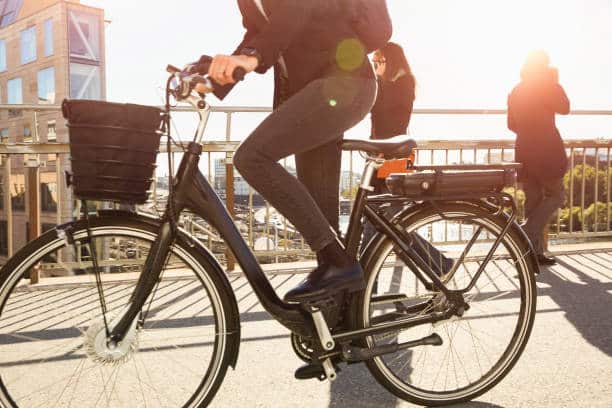
Aluminum alloy city frames
Provide an excellent balance of affordability, strength, and low maintenance.
Steel frame
Adds shock absorption but with more weight. Chromoly steel city frames with suspension forks or seat posts offer a comfortable commute.
Desirable features for city e-bike frames:
- Relaxed geometry for an upright, comfortable riding posture
- Mounting points for racks, fenders, and cargo bags
- Tire clearance for wider tires and some light off-road use
- Responsive motor and quality brakes for safe city riding
WHAT ARE THE BEST Hybrid E-Bike Frames?
Hybrid e-bikes blend qualities of mountain, road, and city bikes. The frame materials and design provide versatility for riding in various environments.
Aluminum alloy hybrid frames
Allow riders to efficiently tackle hills and longer distances. Front suspension takes the bite out of bumps and cracks in the road. Multiple mounting points make it easy to customize for different needs.
High-quality chromoly or aluminum frames with a more relaxed geometry strike a nice balance for casual, comfortable riding. Hybrid e-bike frames are designed to be adaptable to the rider’s needs and riding style.
WHAT ARE THE New Innovations in E-Bike Frames and Materials?
E-bike technology is constantly improving, and frame materials are no exception. Researchers are developing new alloys and composites to make e-bikes lighter, stronger, and more versatile.
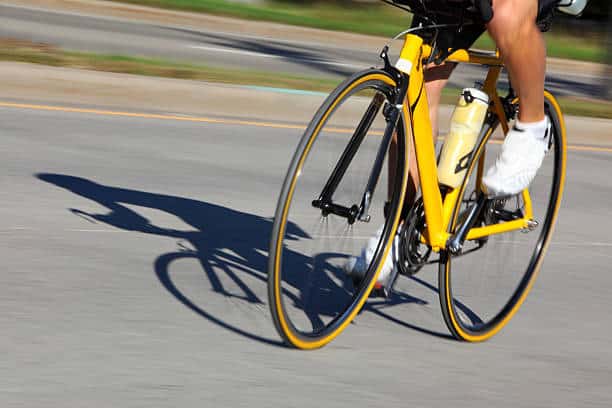
Carbon Fiber
Carbon fiber is an ultra-lightweight, stiff material used on high- performance e-bikes. Carbon e-bike frames can weigh 2 to 3 pounds less than aluminum.
However, carbon fiber is expensive and can crack if impacted. New carbon nanotube composites may make carbon fiber more impact-resistant and affordable.
Aluminum Alloys
Aluminum alloys like 6061 and 7005 are inexpensive, lightweight and corrosion-resistant.
New aluminum lithium alloys can shave 10-15% off the weight of a traditional aluminum frame with no loss in strength or durability.
Magnesium
Magnesium is the lightest structural metal, but it’s difficult to work with and corrodes easily.
New magnesium alloys and production techniques aim to solve these issues. A magnesium e-bike frame could weigh just 6 to 8 pounds.
Bamboo
Bamboo is an eco-friendly material that absorbs shocks and vibrations well.
New bamboo bike frames use aluminum or carbon fiber joints to address bamboo’s low durability. Bamboo e-bike frames could appeal to environmentally-conscious riders.
3D Printing
3D printing allows for complex, lightweight designs not possible with traditional manufacturing. 3D printed titanium e-bike frames could weigh just 5 to 7 pounds. Startups are developing affordable 3D printers to make e-bike frames at home.
E-bike frame innovation is accelerating to meet the needs of different riders and riding styles. In the coming years, e-bikes will become highly customized for on-road, off-road, cargo transport, recreation and more.
The future of e-bike frames is lightweight, durable, affordable and tailored to how you ride.
Conclusion
So there you have it, the complete guide to e-bike frame materials. We covered the advantages and disadvantages of aluminum, carbon fiber, steel, titanium and even bamboo.
You now know which materials work best for mountain, city and fat tire e-bikes. Carbon fiber frames are featherlight but aluminum gives you more bang for your buck. And new techniques like hydroforming aluminum tubes boosts strength while dropping weight.
Whichever material you choose, modern e-bikes let you ride faster, farther and have more fun. Now get out there and start pedaling!





